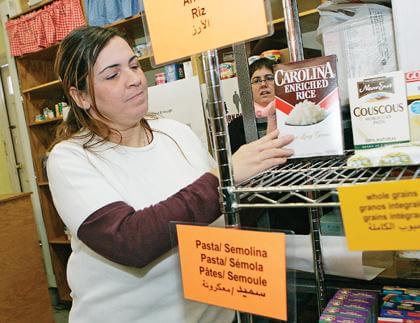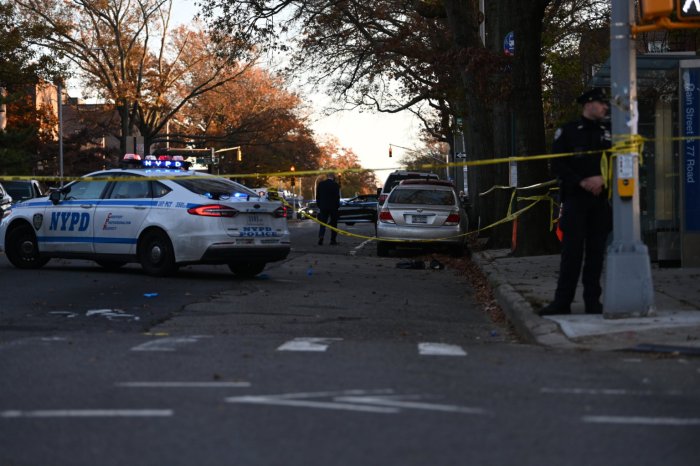By Jeremy Walsh
Lines are stretching out at the borough’s food pantries and portions are getting smaller as the growing number of hungry residents outpace the supply of donated food, hunger advocates said last week.
“We had 200 people in this line on Monday,” said Sister Tesa Fitzgerald of the Hour Children Food Pantry in Long Island City. “They came early, stood a long time. We ran out of a lot of stuff. We barely had turkey to give out.”
Bishop Mitchell Taylor, president of the East River Development Alliance and pastor of the Center of Hope International Church, said the food pantry at his parish has seen a 63 percent increase in the number of bags of food handed out in the past six months.
Queens food pantries have faced major increases in demand this year, according to the New York City Coalition Against Hunger’s annual survey. Some 84.2 percent of pantries reported higher demand, compared with 88.1 percent for the Bronx, 85.9 percent for Brooklyn, 85.7 percent for Staten Island and 83.6 percent for Manhattan.
The borough’s pantries also had a 76.8 percent jump in the number of agencies that did not have enough food to meet the growing demand, the most of any borough. Some 74.4 percent of Bronx pantries, 71.4 percent of Staten Island pantries, 61.8 percent of Brooklyn pantries and 52.2 percent of Manhattan pantries were unable to meet the demand.
Fitzgerald attributed that jump to the plight of the borough’s marginalized population.
“I think Queens has a hidden poverty, and when times get tough, it surfaces,” she said, noting that the large concentration of undocumented immigrants have been hit particularly hard.
“We have an enormous amount of waiters and dishwashers that are losing their jobs,” she said.
Inside Hour Children, shelves were stocked primarily with canned goods and legumes. Three or four boxes of cereal remained on one shelf.
“Normally I wouldn’t stock my shelves with canned goods,” said Christy Robb, director of community outreach for the pantry. “But I don’t have any other food and I am almost through my budget for the year, which started in July.”
Rice and pasta have shot up in price as have milk and juice, she said.
Joel Berg, of NY Hunger Coalition, said that private donations will not solve the problem.
“It’s like trying to fill the Grand Canyon with a teaspoon,” he said, urging federal legislators to step into the gap.
U.S. Sen. Charles Schumer (D−N.Y.), who appeared at a news conference at the pantry, proposed a three−point plan to help combat the hunger problem that included putting $50 million in emergency food assistance funding into the economic stimulus package Congress will work on this month, making permanent the current food donation tax breaks and boosting food stamps by 10 percent.
“We have to pledge ourselves to try and deal with this problem,” he said.
But federal relief could take months, and the staff at Hour Children say the lines continue to grow.
“I think it’s worse this year,” said Brunilda Rivera, the assistant manager who has worked at the pantry since it opened in 2005. “People come every week because they need this food. They’re out of cash, don’t get public assistance.”
Most of those who do not receive food stamps are immigrants who are afraid of being deported if they register for welfare.
Rivera said she also is a beneficiary of the pantry.
“I can’t afford to buy a turkey,” she said.
Ravenswood Houses resident Theresa Jefferson, 44, said the pantry is responsible for roughly half her monthly food supply — including a turkey and chicken for Thanksgiving dinner.
“It’s very important we come here every week, especially for the kids,” she said, noting she recently spent 3 1⁄2 hours waiting in line for food. “They need vegetables.”
Reach reporter Jeremy Walsh by e−mail at jwalsh@timesledger.com or by phone at 718−229−0300, Ext. 154.






























